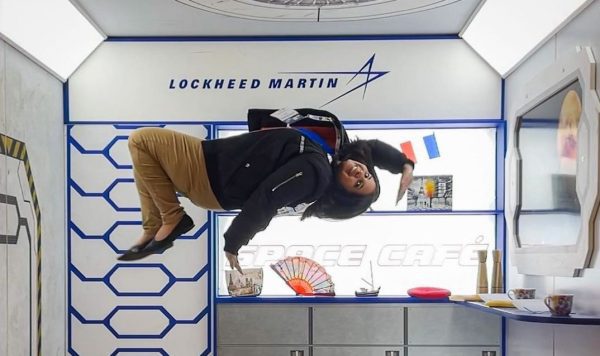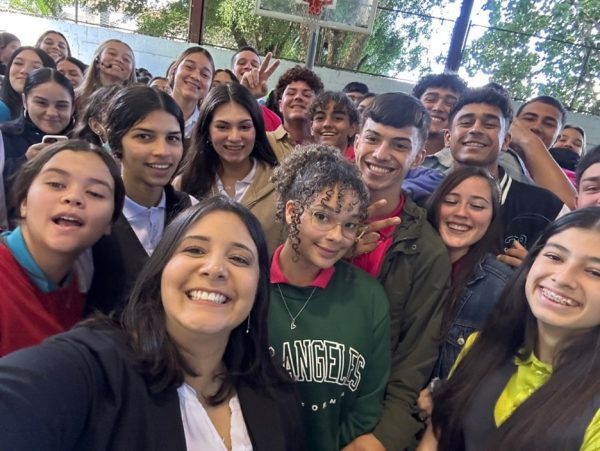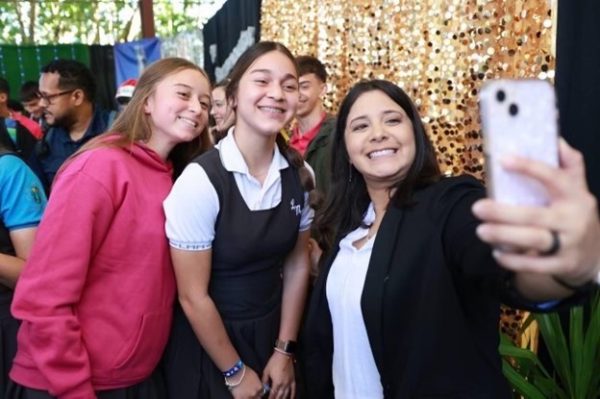Growing up, my favorite movie was Apollo 13, and I dreamed of working in Mission Control and contributing to humankind’s exploration of the universe. However, I distinctly remember feeling discouraged because no one in Mission Control looked like me.
Then as a high school student, I vividly remember attending career fairs and getting to talk to employees of companies I envisioned myself working for. However, it was discouraging knowing that majority of the employees in STEM (Science, Technology, Engineering and Math) all looked the same, and none of them looked like me, a minority woman. I knew someday I would have the power to change that. Today, I use my platform to make the space industry more welcoming and inclusive, not only by putting a stellar spin on the latest trends, but also by setting an example for anyone reaching for the stars.

The STEM profession currently has 26% women working in various fields, with only 9% of them being Hispanic women. This is why I make it my mission to perform outreach and talk to students about the need for diversity in the workplace. The most powerful asset a company can have is its employees advocating for the organization. For me, I want to see more women, especially minorities, working in the space industry.
One of my favorite stories is about the first American woman to go to space, Sally Ride. When Sally Ride was preparing for her voyage, a group of engineers asked her if 100 feminine products would be enough for her 10-day journey in space. I always bring this up because it exemplifies the problem that our society faces, which is the lack of knowledge and resources surrounding diversity and inclusivity. For us to truly be an interplanetary species, we will need everyone to contribute to space exploration.

A passion of mine is making videos, joining zoom calls and webinars and sharing my love for STEM to anyone who is interested. I am overjoyed knowing that the path I took to get to my career can one day inspire others to become an engineer, no matter their background.
I started noticing a beneficial way to reach a wider audience was through social media. Across all these platforms, I saw there was a void of educational content and women in STEM fields. So, when our day-to-day lives came to a halt in 2020, I started dedicating my free time to creating video content showcasing my career, the obstacles I faced, the reality behind being a female engineer and more.
By doing this, I not only got students interested in space and science, but also demonstrated a Hispanic female working in the space industry as an engineer. There are currently 4.6 billion social media users worldwide, and 84% of those users are between the ages of 18-29. This is an impressionable age group, which is why it’s important for my industry to show what a career in STEM looks like and what it takes to be successful in the field.

Growing up, my father was enlisted in the Army and my mother worked in a factory making ambulances. We were lucky enough to have moved to Florida when I was starting middle school. My brother, sister and I all attended Orange County Public Schools, which gave us access to books, computers and other educational resources. I understand that not every school in the country, or even where we came from in Puerto Rico, are blessed to have the same learning tools. Which is why I’m passionate about ensuring the next generation is given the same opportunities I had.
I’m lucky enough to work with P.A.S.S.A.G.E., which stands for Providing Aid and Science to South America’s General Education. I am one of the Science Communicators that is involved with the project and our goal is to raise $50,000 to put towards books, science kits and other STEM-related educational resources.
The plan is simple – gather a group of amazing Science Communicators around the world, collect funds through public fundraising and fly the resources to locations in the Caribbean and Latin America. We do this while simultaneously documenting our journey, which will premiere at the Kennedy Space Center.

With the help of Lenovo Technology, I have been able to expand my network and utilize the new Motorola Edge+ to create new and exciting content to showcase the diversity that is needed in the space industry.
I will also be attending a few outreach events in Puerto Rico, where I will be a judge and mentor for an upcoming Robotics Competition during Engineering Week in the month of February. The fast and lightweight Lenovo ThinkPad X1 Series will be used to run the software that the engineering teams will need to operate their programs and verify its accuracy. By providing mentorship and the appropriate technology, students in underrepresented areas will feel that they belong in the space industry.

